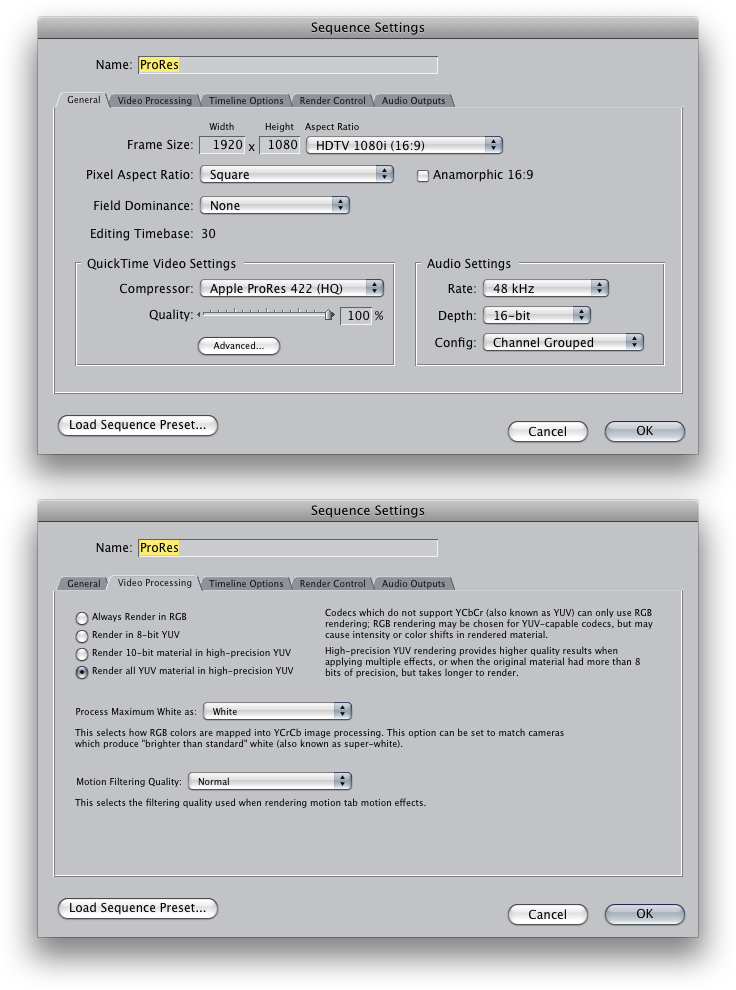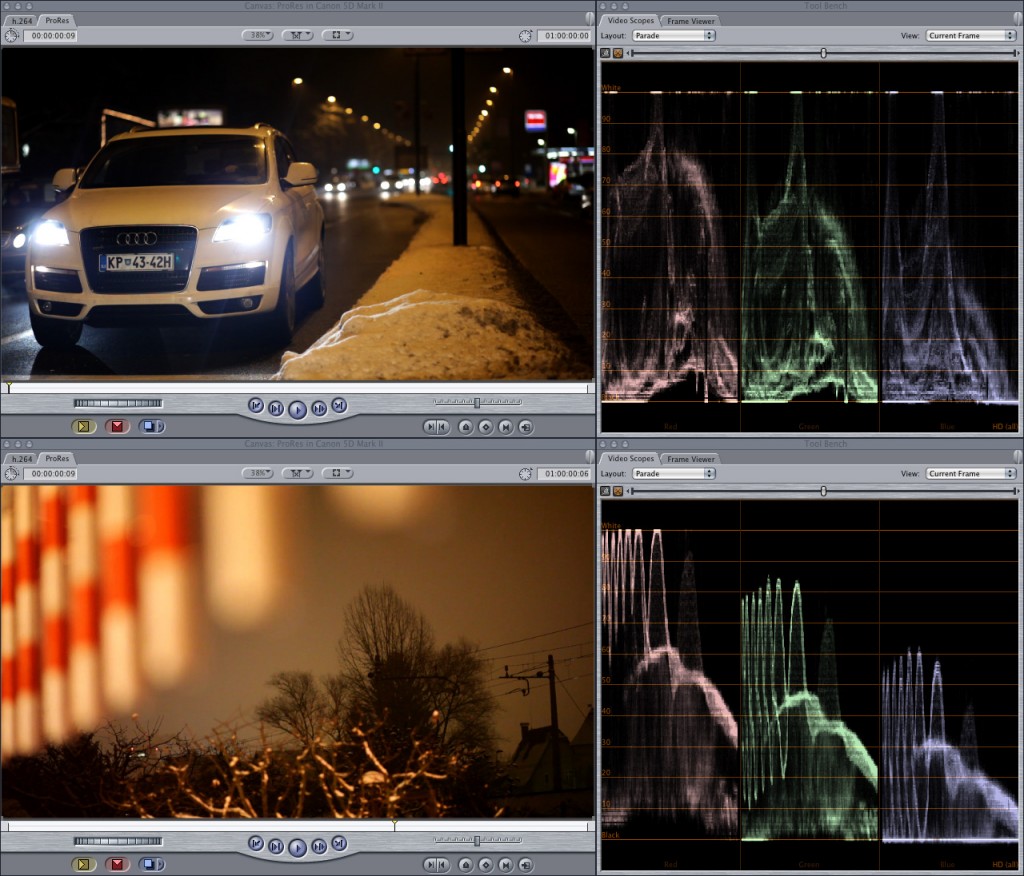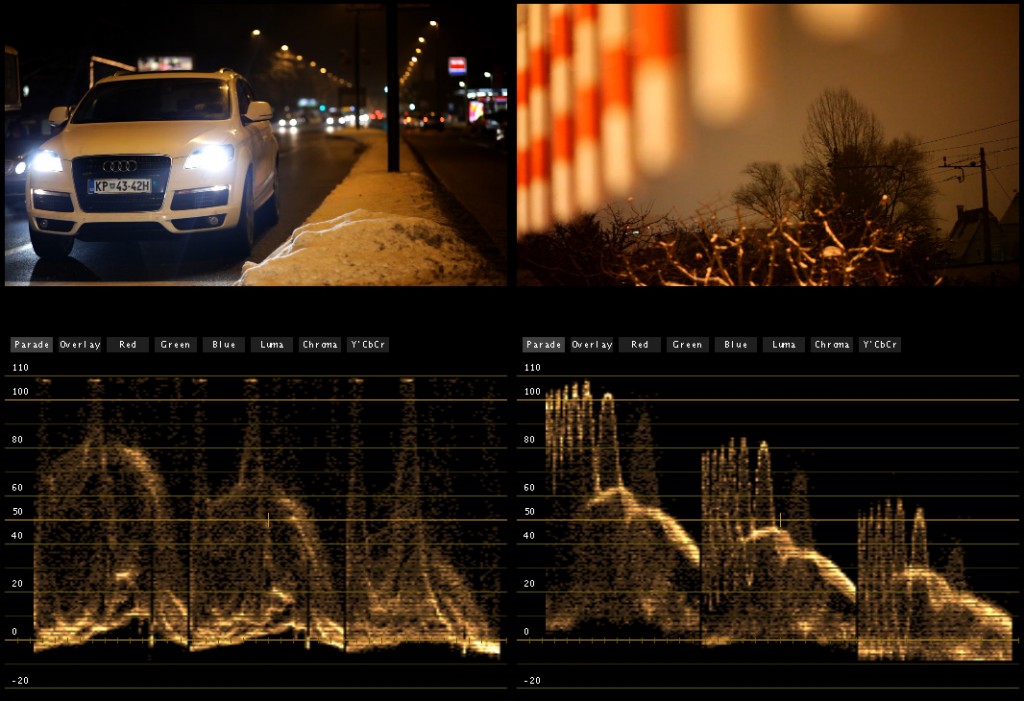There was a lot of posts about Canon EOS 5D Mark II camera video mode, crushing of the blacks, QuickTime’s inability of showing luminance values higher than 100 and lower than 0. You can read more info about it at ProLost – 5D crushing News and Full dynamic range video from Canon 5D MkII.
What I wanted to find out was, what can be done to eliminate as much defects and mistakes that Canon choose to build into this camera.
First I would like to say that this camera is amazing in low light situations which means I can shoot at night under the street lamps with no extra lights. You have to be careful though about the noise that appears at high ISO settings.
Few weeks back when we got at work (Baza Media 2.1) 5D on loan, I decided to take it on a test of my own. Before I even read the quick manuals (Cinema 5D – The 5D mkII Handbook of Facts), I went out to shoot some material. It was already dark outside, so I went to the nearest crossroads and shood some cars passing by.
Streets at Night – Canon EOS 5D Mark II from Peter Prevec on Vimeo.
I got the lenses from Samo Vidic (Only Samo): EF85mm f/1.8 USM, EF16-35mm f/2.8L USM in EF15mm f/2.8 Fisheye. I probably missed the exposure once or twice and I didn’t use Exposure Lock button, because I am a Nikon user and I was kind of lost in the world of Canon.
But the real nightmare began after the shoot. I came home, downloaded the material and started to look at it. Everything skipped. Even during the shoot I noticed that some clips didn’t have smooth motion, but it wss skipping frames. At home all my clips were like that. As it was playing every couple of frames and not the full 30fps. I was frustrated so I left everything as is and only hoped that in two days when we will do some serious testing everything would be o.k.
We went to Kranjska Gora on Sunday, we downloaded the material and everything was o.k. When I later watched the material at home I noticed again the skipping of the frames. ?!? Was it possible that the codec 5D uses for video is too processor intensive to decode and I can’t watch it in realtime on my 4 year old PowerMac G5 Dual 1,8 GHz? I tried to watch the footage on white MacBook and it was playing more smoothly. Better that G5. Interesting. I knew that postproduction of the video will be full of frustrations and waiting to renders to finish, because G5 is still my main Mac.
First I wanted to check how much I can push the material with color correction. I made a quick rough edit of the material and I opened Video Scopes. I noticed that values higher that 100 and lower than 0 were not there. The sequence setting were the same as materials (H.264, 30fps).

Parade - Final Cut Pro - H.264
You can see clearly that blacks and whites were crushed. The whole color latitude that camera captured was not showing and that is not good for further manipulating of the colors. What about if I change the sequence settings to ProRes? ProRes is Apple’s codec meant for postproduction and H.264 is meant for delivery. So I changed the settings.

ProRes sequence settings
And I checked Video Scopes again.

Parade - Final Cut Pro - ProRes
Almost the same, maybe the bottom line was softer and showed some more blacks. That was not good enough for me, so I decided to check also with application that was designed for color correction – Apple Color. I loaded the original H.264 sequence to Color. The story was different here.

Parade - Color - H.264
Blacks and whites were not crushed and so there was more latitude for color correction. I could without any problem set the white balance (so the orange color from sodium vapor lamps was not so visible). After I exported the material to ProRes (Color can only export the material to Uncompressed codec or ProRes). the problem with real time playback was gone so I fine tuned the edit. I added the titles in Shake and music in GarageBand. Final clip (32s) was then encoded in Compressor to 720p 25fps which made it 38s long (32s * 30fps = 960fr / 25fps = 38s), which took my old G5 almost 12 hours. I must say that I used best settings and Optical Flow for resizing and retiming.
Finally I can say that I am in spite the problems throughout the process satisfied with the outcome. I must say that there were to many drawbacks to use the camera for any long form project. But if you have something short to do with no deadline, I am happy to recommend this camera. Let me know if it was worth the problems in the comments below.
We’ve added this to the 5D wiki at http://planet5d.com We’ve got more 5D reviews/still/video samples than anywhere else on the planet.
You said you sent the original H.264 sequence to color and “the story was different there.” I have tried to replicate what you did and can’t seem to get the same results as far as dynamic range. My highlights keep getting crushed. I’m just curious what your settings are (specifically Color and QuickTime). Any information that you can give me would be VERY appreciated! Thanks!
The way you can see if there is any info over and under the 0-100 range is to uncheck the Broadcast Safe in the Setup tab, Project Settings in Color. (For the final export Broadcast Safe should be checked.) If there is information, then all you have to do is lower the highlights and lift the blacks.
But there is also a chance that you do have crushed highlights, cause the range was to wide or the exposure was set to high.
I hope I explained it clearly enough otherwise let me know and I will elaborate some more.
Between me and my wife we’ve had more cameras over the months than I can count, including many different Canons, Sonys, Samsungs and many more models. But, the last few weeks I’ve settled down to one line of devices. Why? Ofcourse I was happy to notice how well-designed and thrilling the underappreciated (and widely mocked) Canon EOS Rebel T2 actually is. With it I have been able to take the most fantastic pictures. That’s all I wanted to say, hope you have a great day and make sure to photo some cool photos!